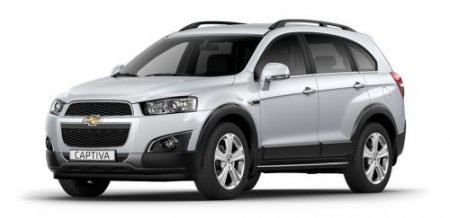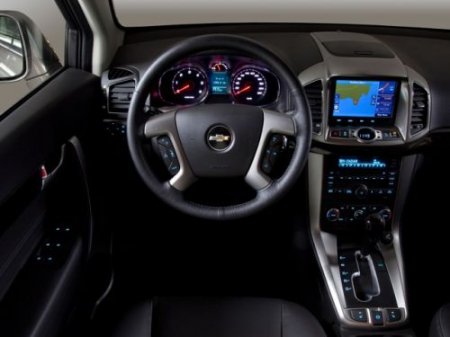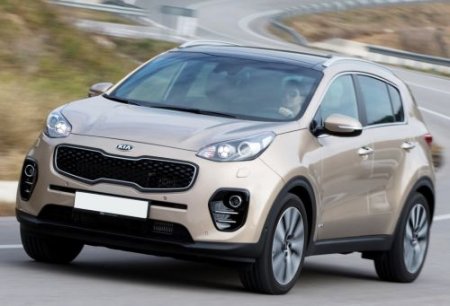
Chevrolet Captiva in detail about fuel consumption
Content
Chevrolet Captiva is a crossover whose high safety and build quality quickly found fans with the most positive reviews. But, one of the most pressing questions when buying such a model was - what is the fuel consumption of a Chevrolet Captiva, what does it depend on and how to reduce it?

Briefly about this model
The division of General Motors in South Korea began mass production of the Captiva starting in 2006. Even then, the car gained popularity, showing a high safety rating for the driver and passengers (4 stars out of 5 possible according to the NCA). On average, power ranges from 127 hp. and up to 258 hp It all depends on the configuration and year of manufacture of the car.
| Engine | Consumption (track) | Consumption (city) | Consumption (mixed cycle) |
| 2.0 (diesel) | Xnumx l / xnumx km | Xnumx l / xnumx km | 8.8 l / 100 km |
The Captiva is equipped with ABS and EBV brake force distribution, as well as ARP anti-roll-over system. It has front airbags and the ability to install additional side airbags.
When buying, you can choose a car on both gasoline and diesel. The first models offered options of two petrol (2,4 and 3,2) and one diesel (2,0). All-wheel drive and front-wheel drive cars were also available. Of course, with such engine performance, and taking into account other characteristics, buyers were interested in what Chevrolet Captiva gasoline consumption per 100 km, how much fuel is placed in the fuel tank.
More about the TX model range of Captiva
If we talk about the resource and its use, then it depends on 50% of the engine and technical condition, and on the second half - on the owner and his driving style. To roughly understand what fuel consumption is expected, you should pay attention to the TX of the car, and in what year the production was.
First release 2006-2011:
- two-liter diesel, front-wheel drive, power 127/150;
- two-liter diesel, four-wheel drive, power 127/150;
- gasoline 2,4 l. with a power of 136, both four-wheel drive and front;
- gasoline 3,2 l. with a power of 169/230, only four-wheel drive.
Fuel costs on a Chevrolet Captiva with an engine capacity of 2.4, according to technical data, range from 7 liters (extra-urban cycle) to 12 (urban cycle). The difference between full and front-wheel drive is negligible.
3,2L six-cylinder engine has flow rates from 8 to 16 liters. And if we talk about diesel, then the documentation promises from 7 to 9, depending on the configuration.

Second issue 2011-2014:
- diesel engine with a volume of 2,2 liters, front-wheel drive 163 hp, and full 184 hp;
- gasoline, 2,4 liters with a capacity of 167 regardless of the drive;
- gasoline, 3,0 liters, all-wheel drive, 249/258 hp
Given the new engines since 2011, consumption, although not significantly, has changed. The fuel consumption of the Chevrolet Captiva 2.2 is 6-8 liters in front-wheel drive and 7-10, if the buyer prefers the full.
Gasoline consumption on the 2,4 engine is minimal - 8 and maximum - 10. Again, it all depends on the drive. A three-liter engine is able to burn 8-16 liters of gasoline.
The third edition of 2011 - our time:
- diesel engine 2,2, 184 hp, all-wheel drive, manual/automatic;
- gasoline engine 2,4, 167 hp, all-wheel drive, manual/automatic.
The latest release includes a major overhaul of the suspension, running gear, and new engines. Fuel consumption for Chevrolet Captiva diesel - from 6 to 10 liters. Using the machine, the resource takes more than with mechanics. But, this common truth applies not only to this crossover, but to all cars.
Chevrolet Captiva gasoline consumption rates per 100 km with a volume of 2,4 reach 12 liters with a minimum consumption of 7,4.
What affects consumption
Of course, you can calculate how much fuel is spent for each model individually. But, even putting two absolutely identical cars side by side, they will give different indicators. Therefore, it is rather difficult to say what the average fuel consumption of a Captiva is on the highway or in the city. There are several reasons that explain this.
Technical and real numbers
The technical data of Captiva differ from the real ones (this applies to fuel consumption for driving). And in order to achieve maximum savings, you must follow a few rules. Firstly, the consumption depends on the friction force of the coated wheels. Camber/convergence made in time will help save up to 5% of the total consumption.

A lot depends on the driver.
Another important factor is driving style. The owner of Captiva, who likes a sharp start from a place, plus four-wheel drive, with a declared maximum consumption of 12 liters, can reach 16-17. R
The same applies to the track. Constant overtaking and fast driving will take fuel, as in a combined cycle, and maybe more. For each Captiva model there is an optimal speed for long trips, which allows you to minimize the consumption of gasoline / diesel.
The right fuel
It is also necessary to use the fuel that is specified in the technical documentation. Using a different octane rating will result in more loss than indicated. In addition, there are several other minor nuances that affect consumption. Operating the air conditioner at full capacity increases fuel consumption. So is wheel width. Indeed, by increasing the contact area, the effort to overcome the friction force increases. And there are many such nuances.
Thus, we conclude that a technically sound car with careful driving can significantly save fuel.

